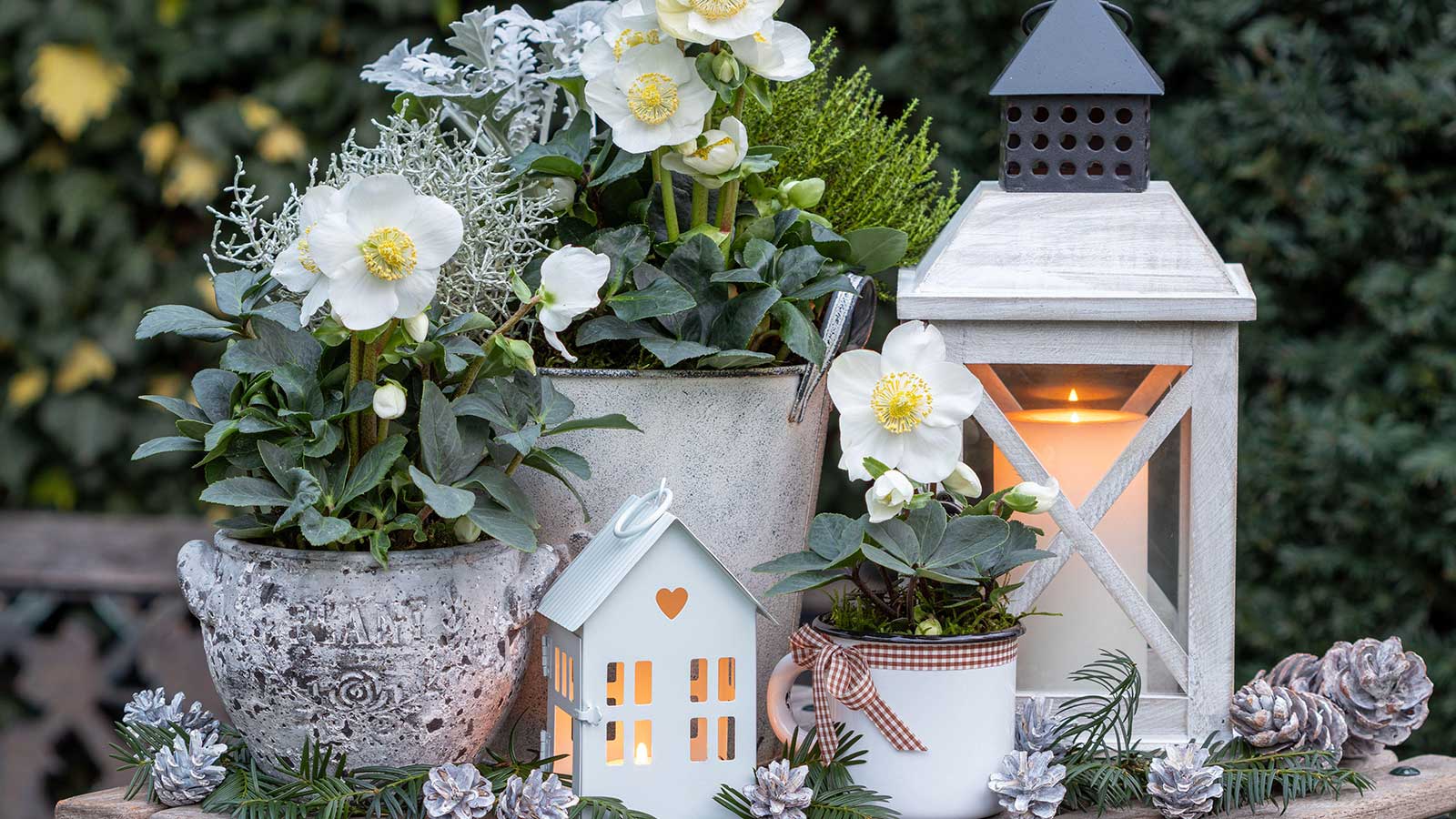
Whether it's heavy downpours saturating potting soil, gusts of wind tipping planters over, or freezing temperatures cracking containers, winter weather can be hard on our outdoor potted plants.
Tender plants in containers should simply be brought indoors if you want them to survive. However, even the hardier species – including the best winter plants for pots – can benefit from a bit of protection when the outdoor elements get tough.
Luckily, there are a few simple steps you can take to be prepared and minimize the risks of damage.
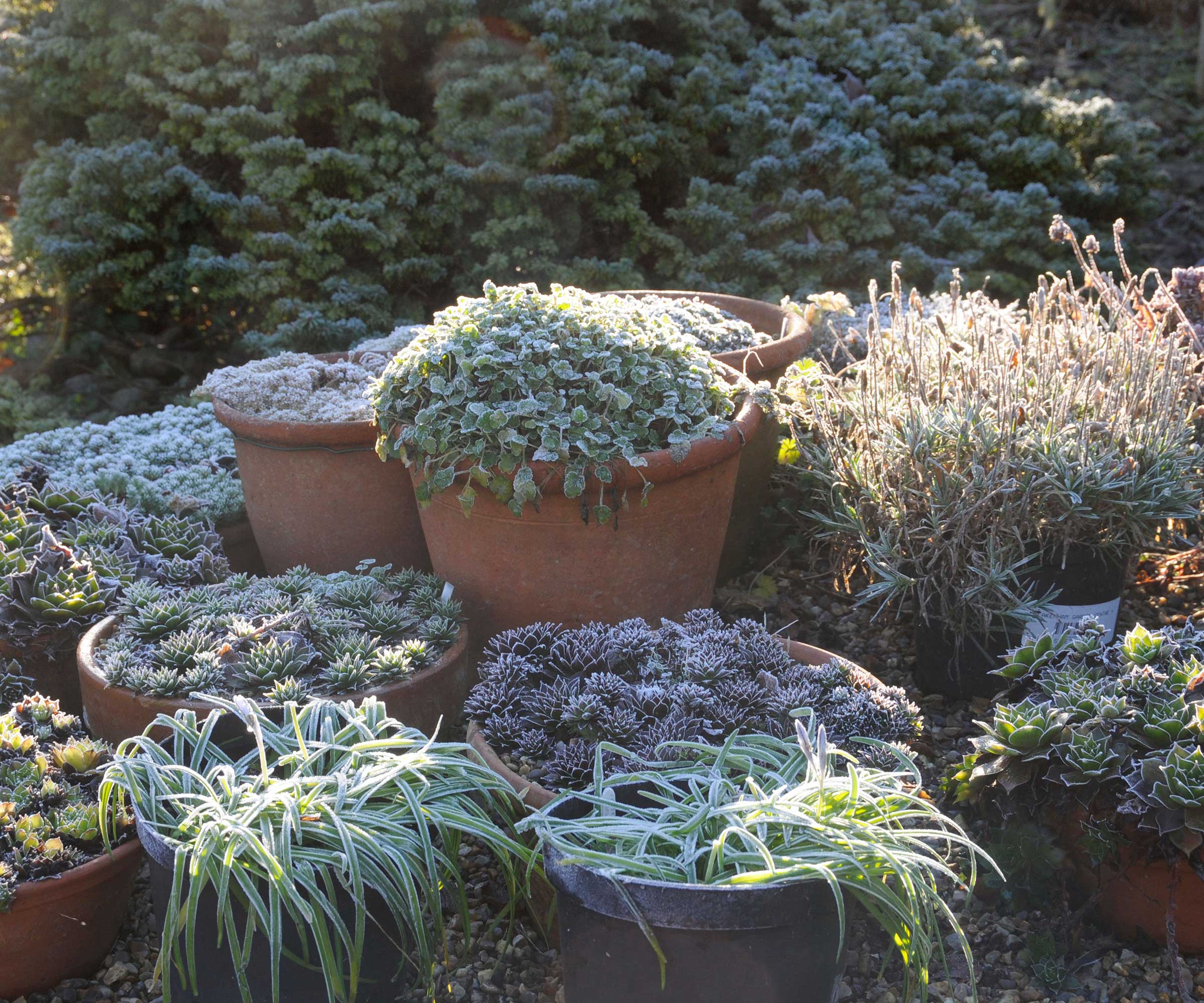
Protecting potted plants from inclement weather – 5 top tips
Help your container plants stand up to challenging winter weather with this practical advice.
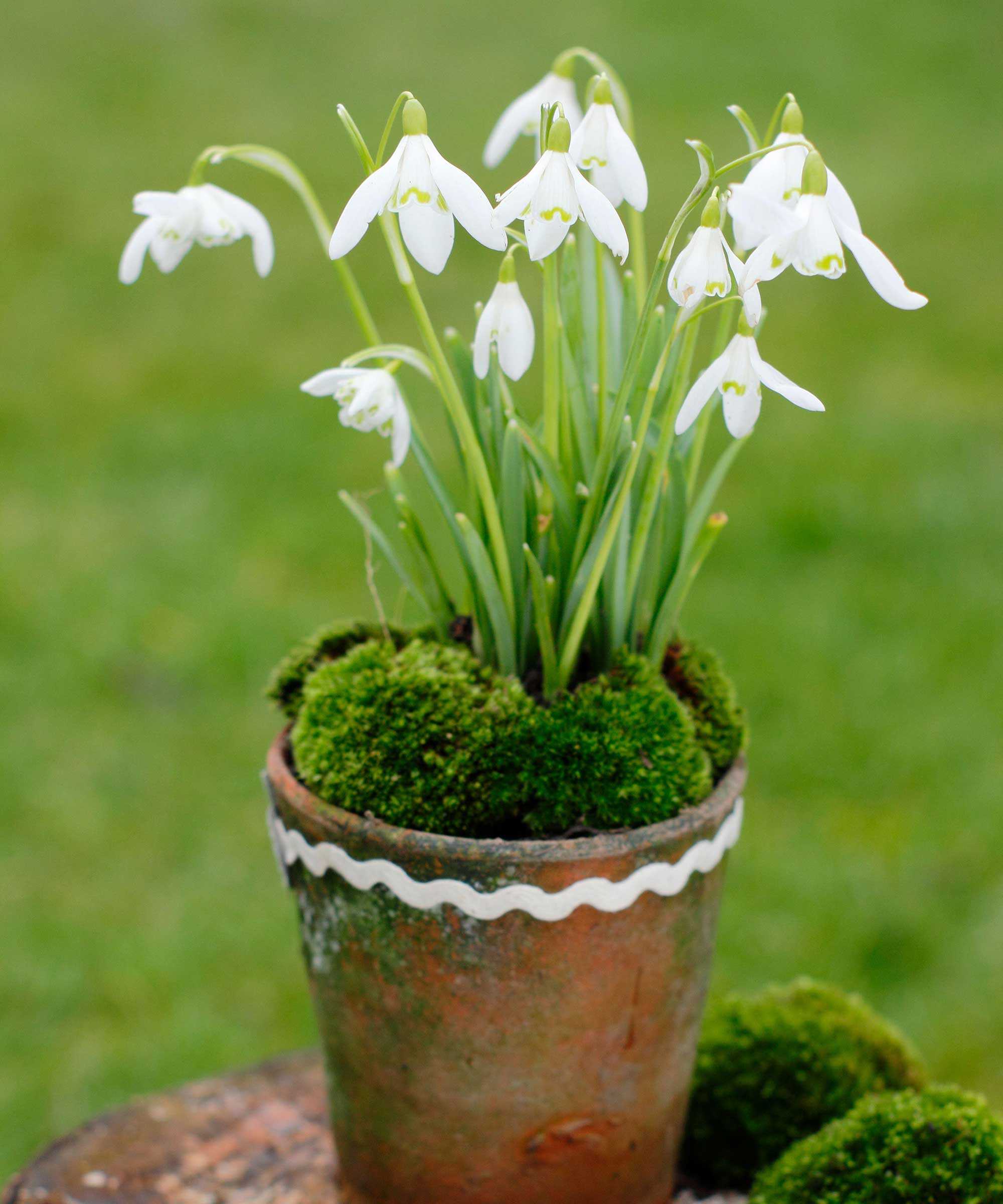
1. Move them out of harm's way
As mentioned, many plants are better off moved indoors when temperatures drop. These include pelargoniums, citrus trees, and any tropical houseplants that you moved onto your patio during the warmer months. A bright conservatory is ideal for most – or even a sunny windowsill for smaller plants.
A frost-free greenhouse is often suitable, too. 'Remember to keep the transitions gentle, since sudden temperature changes are not good for the health of plants,' advises gardening and landscaping expert Tom Su.
In cold regions, tender bulb plants, such as dahlias and gladiolus, should be lifted from their pots. The bulbs should then be dried and stored somewhere frost-free, ready for replanting in the spring when it's warmer again.
For remaining outdoor potted plants, think about moving them somewhere that's slightly more sheltered than out in the open.
Autumn Hilliard-Knapp of Perfect Plants Nursery recommends moving your pots close to one another, preferably near a house wall. Doing this creates an insulated microclimate which helps protect them against harsh winter conditions, she explains.
If you have a large enough porch, even better, as this will keep off heavy rainfall and snow.
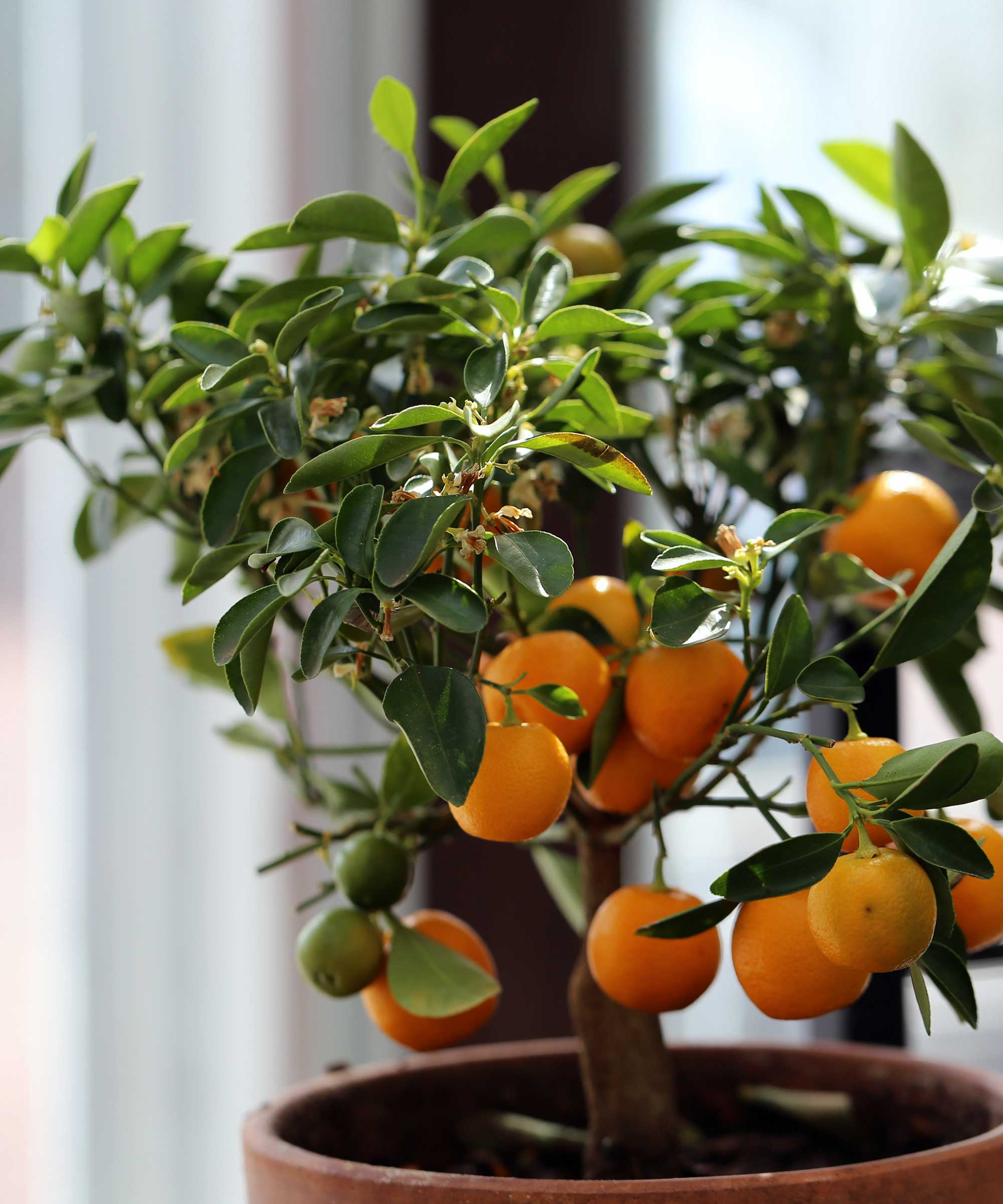
2. Choose your pots carefully
When planting in pots, it's always worth considering the container itself carefully. This can help prevent problems later on.
The first thing to ensure is that your planters have drainage holes in the bottom. This will prevent the soil from becoming waterlogged during bouts of heavy winter rain and the plant roots rotting as a result.
It's also best to opt for pots made from materials that can withstand freezing temperatures, as Anna Ohler, the owner of Bright Lane Gardens, points out. Although they have a rustic charm, terracotta planters are porous and susceptible to cracking when temperatures drop. Glazed ceramic, fiberstone, and plastic-composite containers tend to be tougher. Look for 'frostproof' on the label when buying for extra peace of mind.
Think about the weight of your pots, too. Tall plants should, ideally, be planted in heavier containers to reduce the risks of them blowing over in high winds.
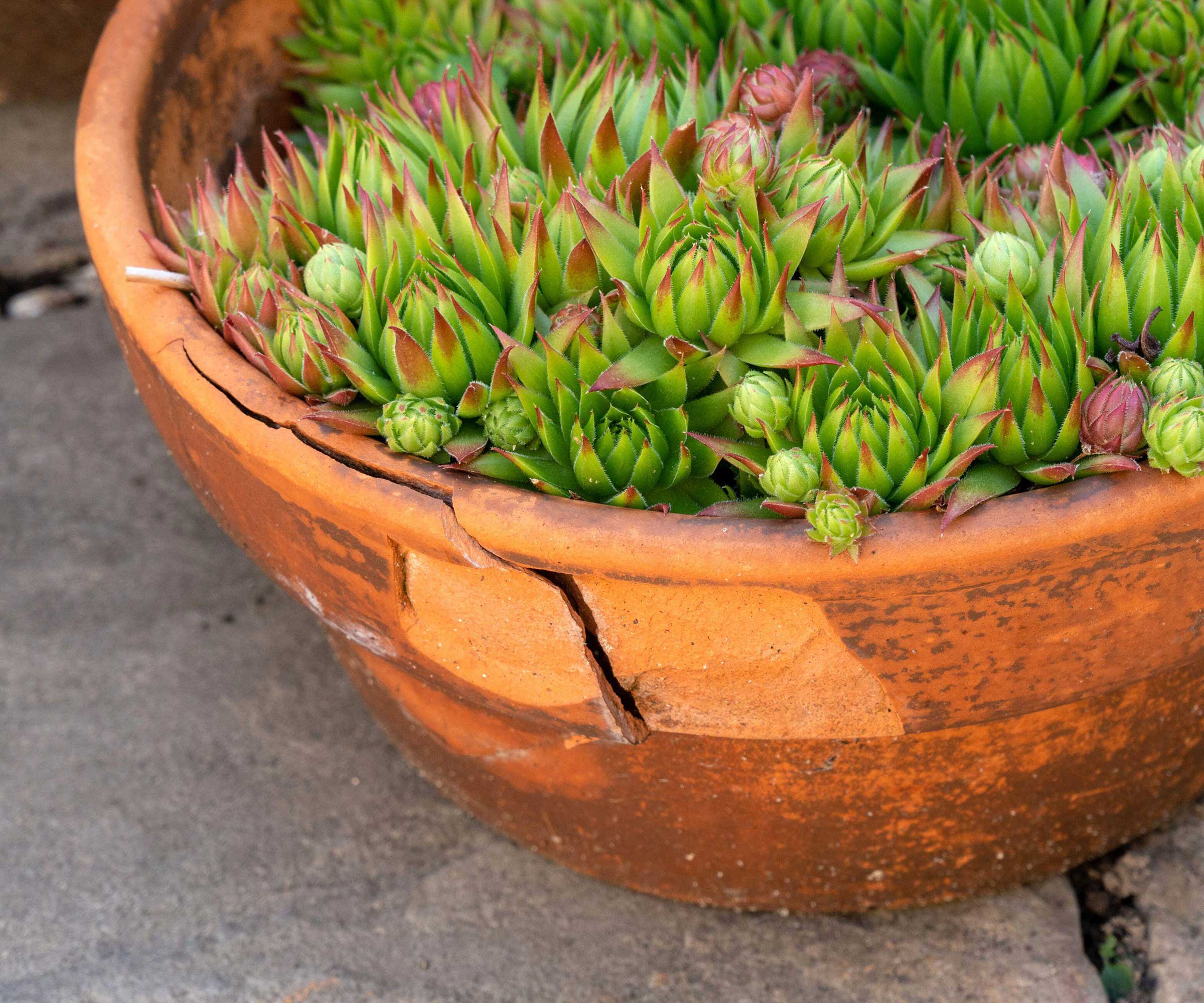
3. Improve drainage
As well as checking your containers have drainage holes, it's a good idea to elevate them slightly off the ground. This prevents the containers from sitting in puddles, explains Tom. 'Use pot feet or even bricks,' he says – 'it helps excess water escape and prevents waterlogging.'
You can shop pot feet at Amazon – these ones from The Garden Gecko are a popular choice. Pot risers also prevent containers from sitting directly on cold surfaces, adds Anna.
The soil your plants are in should also be well-draining to prevent waterlogging. Adding horticultural grit can help.
Remember, too, to drain excess water from any saucers sat underneath smaller plant pots.
Top tip: While it's important to try and prevent your plants from becoming waterlogged, letting them dry out too much – for instance, if you've moved them under cover – can also be problematic. 'Dry and under-watered plants are more likely to suffer damage from the cold and may not recover quickly,' says Autumn. However, if you do need to give them a drink, she advises only watering when it is over 40°F and avoiding the leaves to help prevent frost damage.
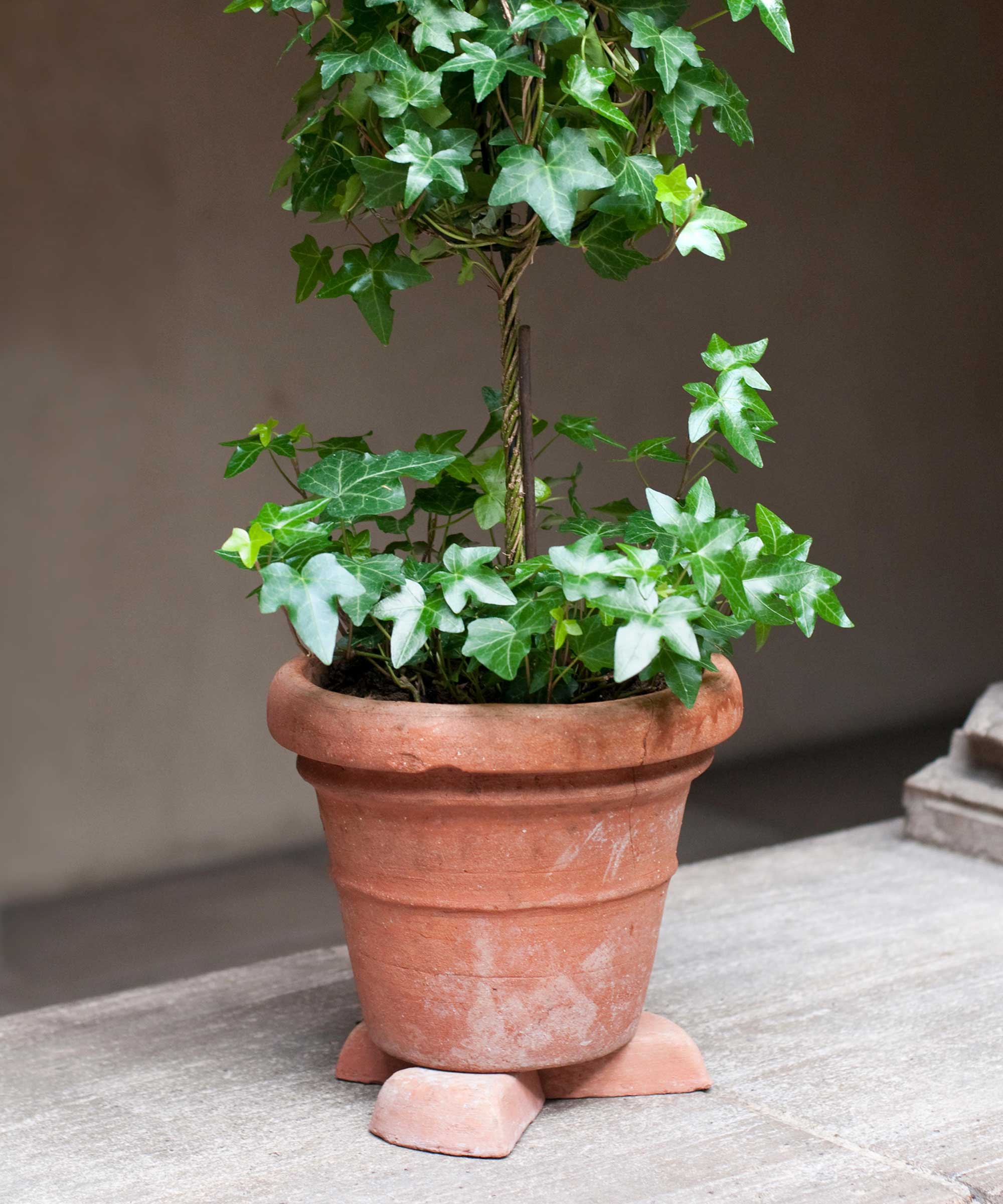
4. Wrap them up
Extremely cold temperatures can put stress on your potted plants. To avoid this, it's worth wrapping a layer or two of material around the containers to protect them from frost.
You can use bubble wrap, burlap, or even old blankets to insulate the roots, says Tom. Alternatively – and if you have the space – you can temporarily sink pots into holes in the ground which will provide some warmth.
'The top part of the plant can be covered with frost cloth or a similar fabric on particularly cold nights,' continues Tom. 'This will keep away the cold air but let the plant breathe.'
As a temporary fix for some plants, you can alternatively try drawstring covers – these ones from EAONE at Amazon are well-rated and have been awarded 'Amazon's Choice'. Remove the covers during milder temperatures to prevent the plants from overheating.
Top tip: Note that putting plastic tarps over the tops of plants should be done with caution. They trap moisture inside, and if they touch the foliage, can actually cause more harm than good. If using, be sure to support them away from the plant with some sort of structure.
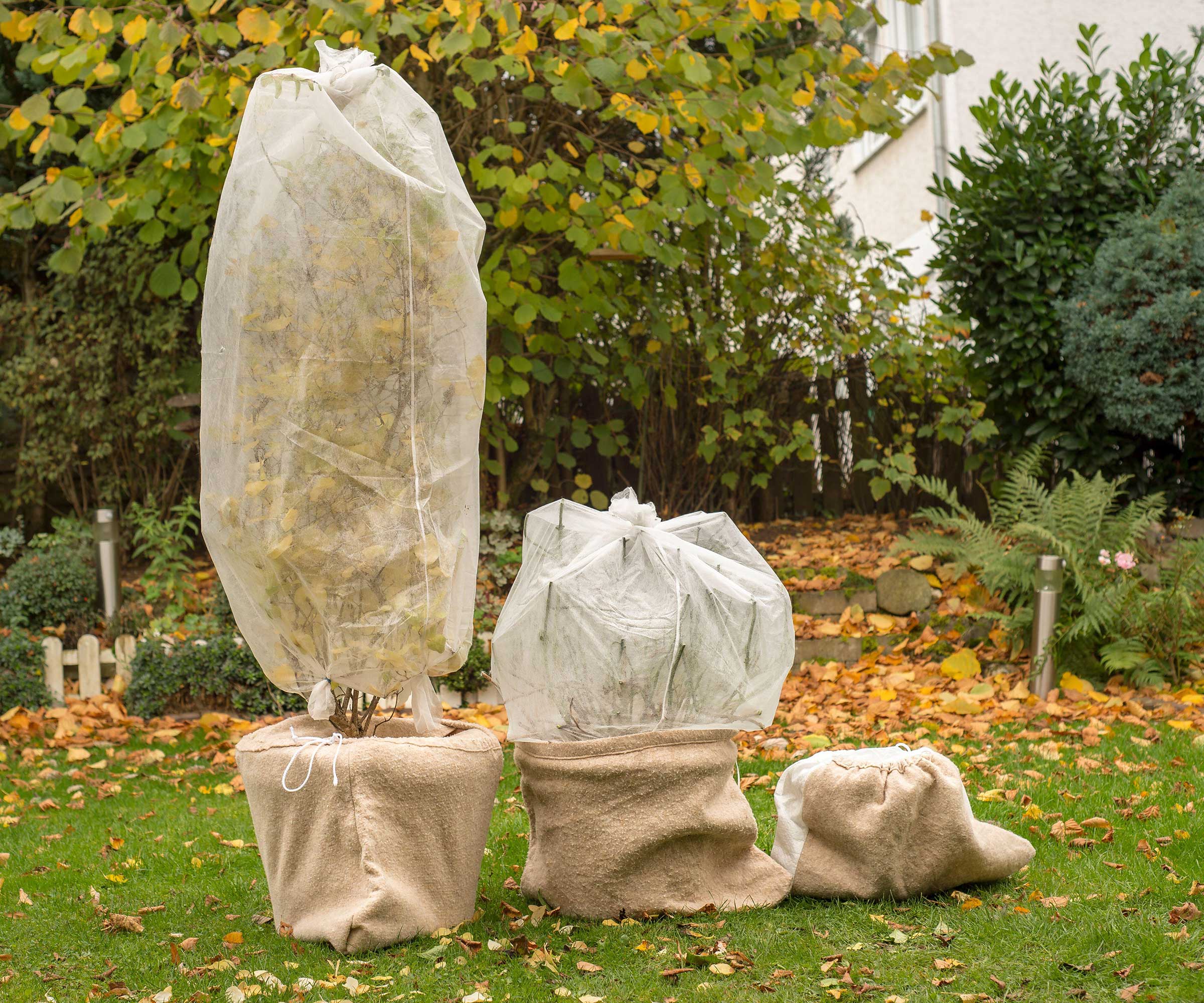
5. Add a layer of mulch
'Apply a layer of mulch, about 2-3 inches deep, on top of the soil in your pots,' recommends Anna. 'Mulch helps insulate the soil and roots, keeping them warmer and preventing rapid moisture loss.' It helps to suppress weeds, too.
You can use homemade compost, wood chips, or straw, or put fallen leaves to good use by making leaf mold – all will also add nutrients to the soil as they break down.
Top tip: Mulching is also an effective way to help protect trees from winter weather, as well as flower beds.
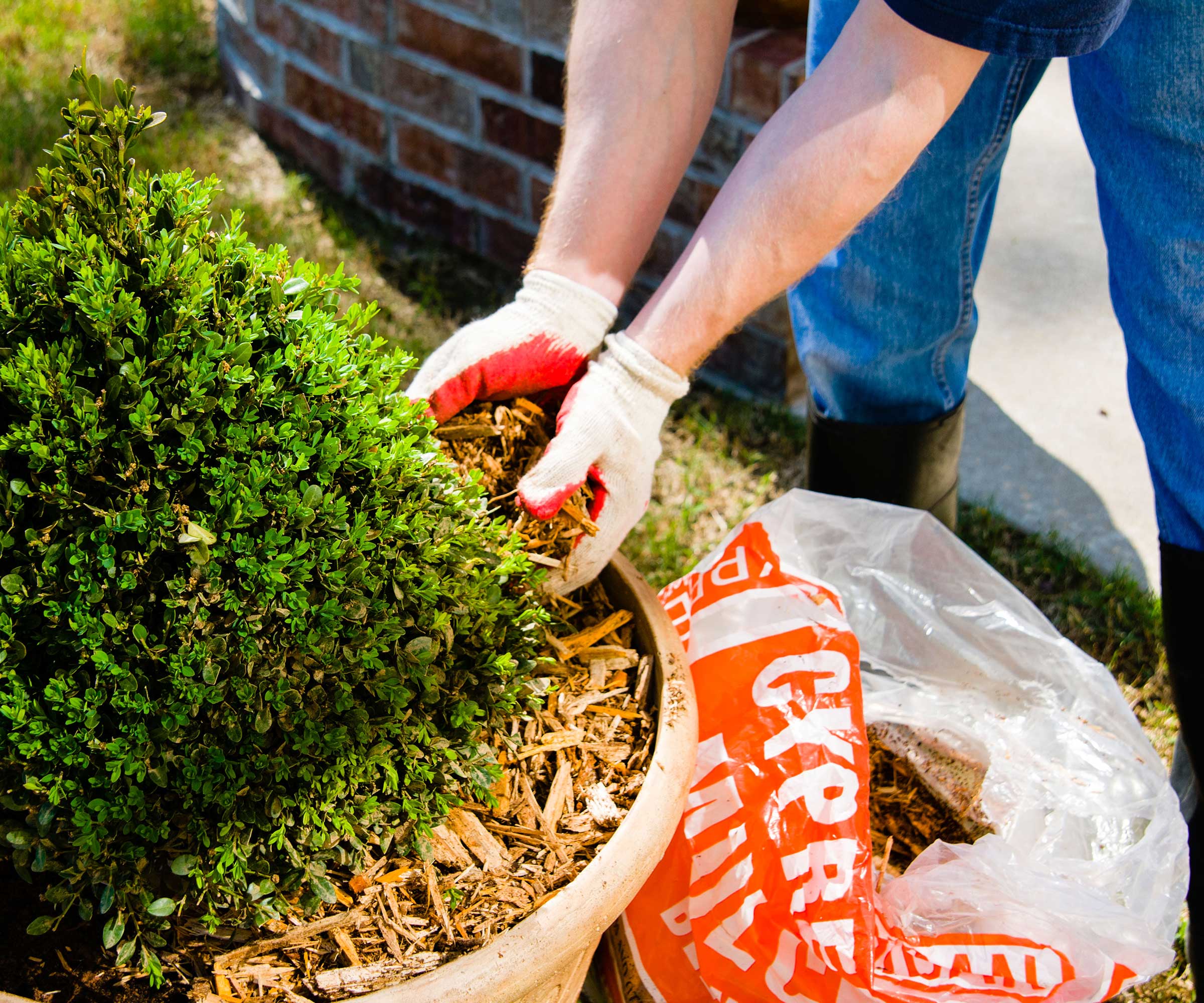
FAQs
When should you protect potted plants from winter weather?
Choosing winter-resistant pots, using well-draining soil, and installing pot feet can all be done well in advance of winter weather. However, protective measures such as frost cloths and moving plants indoors should be done just before frosty or stormy weather begins. For many regions, the first frost usually happens around the end of fall, however it's worth checking your local predictions.
How can you protect container plants from winter pests?
If you've planted bulbs in pots outdoors, keep an eye out for hungry squirrels who are renown for digging them up. Slugs can also be a nuisance for potted plants in winter, as they love damp conditions.
How should you protect potted plants from heavy snow?
'Stay updated on weather forecasts in your area,' advises Anna Ohler of Bright Lane Gardens. 'Be prepared to take additional protective measures if your region is expected to receive heavy snowfall, as this can break or damage healthy branches on your potted plant.' You could assemble a framework to keep snowfall off, or move plants inside temporarily.
As well as protecting your potted plants, there are other ways to prepare your backyard for winter to keep it in top condition. These include weatherproofing a shed, winterizing your lawn, and sorting out your sprinkler system.
Don't forget to give visiting wildlife a helping hand, too, throughout these trickier months – putting out bird feed is an easy and rewarding task.







